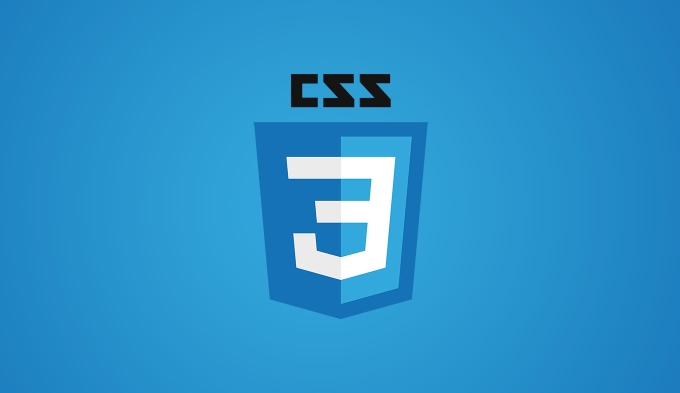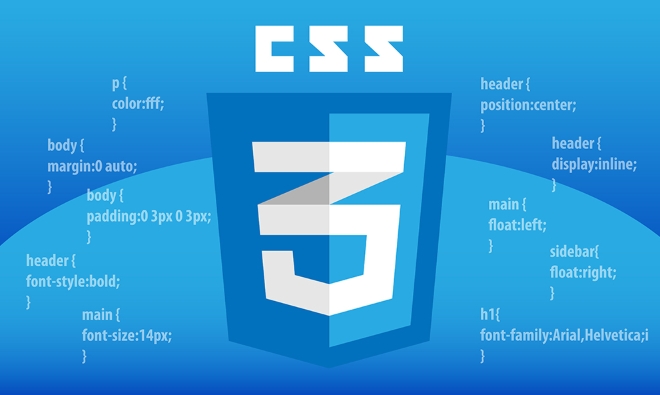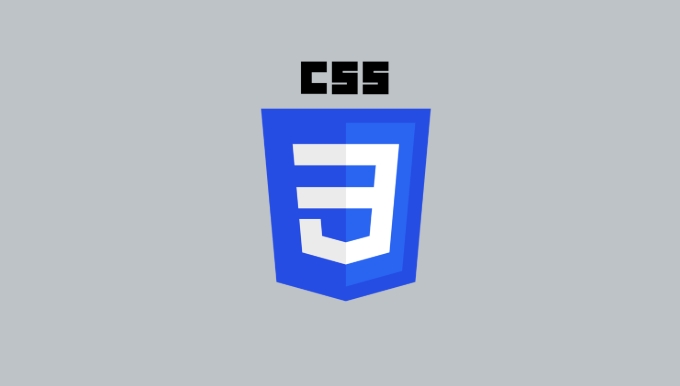The key to introducing custom fonts with @font-face is format selection, path accuracy and compatibility considerations; 1. First, ensure that the basic structure of @font-face is written correctly, specify the font-family and src attributes, and give priority to the use of .woff2 and .woff formats; 2. Note that the path should be relative or absolute paths, and ensure that the server can provide font files correctly; 3. In terms of compatibility, it is recommended to provide .woff2 and .woff to adapt to modern browsers. TTF/OTF can be used as backups, and EOT and SVG have been basically eliminated; 4. Common problems during use include cross-domain loading, path errors need to check whether the writing is correct, the font is not effective, and the corresponding font-family is used, and performance impact can be optimized by compressing fonts or reducing font weight; 5. In actual applications, Google Webfonts can be used to use Google Webfonts Helper or Font Squirrel tools generate code while configuring the MIME type and using font-display: swap to avoid text flickering.

It is not difficult to introduce custom fonts using the @font-face rules of CSS. The key is to select the right format, write the correct path, and consider the compatibility carefully.

Understand basic syntax structure
@font-face is the rule used in CSS to load custom fonts. It allows you to specify a font name and the location of the font file, and the browser will automatically download and apply the font. The most basic writing method is probably like this:

@font-face {
font-family: 'MyCustomFont';
src: url('myfont.woff2') format('woff2'),
url('myfont.woff') format('woff');
font-weight: normal;
font-style: normal;
} The key point here is the src attribute, which tells the browser where to find the font file. Be careful to write relative or absolute paths and make sure that the server provides these font files correctly. Also, it is recommended to provide both .woff2 and .woff formats, as they are best supported in modern browsers and have high compression rates.
Font format selection and compatibility
Different browsers have different support for font formats, so choosing the right format is very important. The current mainstream approach is to use .woff2 and .woff :

- WOFF2 : The highest compression rate and faster loading, suitable for most modern browsers.
- WOFF : Older alternatives, better compatibility.
- TTF/OTF : Although it can be used, it is large in size and slow in loading. It is recommended to be used only as a backup.
- EOT : It is mainly to support old IE (such as IE9 and below), which can be basically ignored now.
- SVG : Only used on very old mobile devices (before iOS 4.1), and not much needed.
If you are not sure which formats to put, adding .woff2 and .woff is basically enough.
Frequently Asked Questions When Using Local Fonts
After the introduction of fonts, you may encounter several common problems:
- Cross-domain problem : If the font file is loaded from another domain name, the server must set the correct CORS (cross-domain resource sharing) header, otherwise some browsers may refuse to load.
- Font path error : Check whether the path written in the CSS file is correct, especially when the font file is placed in a subdirectory.
- Font not working : Make sure you are actually using
font-family: 'MyCustomFont'in the style, otherwise it won't show up even if it is loaded. - Performance impact : Too large font files may affect the page loading speed. You can use tools to compress the font, or only load the font weight you need (such as only loading 400 and 700).
For example, if you introduce a font but the text still remains unchanged, it is likely that the corresponding font-family is not set on the specific element.
Tips for practical application
- It is recommended to use Google Webfonts Helper or Font Squirrel @font-face Generator to generate better compatibility
@font-facecode. - If you host your own fonts, remember to configure the MIME type, otherwise some servers may prevent the font file from loading.
- Use
font-display: swap;to let the browser display the default font first, and then replace it after the custom font is loaded, avoiding the problem of "flashing" the text.
Basically all of this is it, it looks simple, but there are several details that are prone to errors, especially the two parts of path and format.
The above is the detailed content of Integrating Custom Fonts using CSS @font-face rule. For more information, please follow other related articles on the PHP Chinese website!

Hot AI Tools

Undress AI Tool
Undress images for free

Undresser.AI Undress
AI-powered app for creating realistic nude photos

AI Clothes Remover
Online AI tool for removing clothes from photos.

Clothoff.io
AI clothes remover

Video Face Swap
Swap faces in any video effortlessly with our completely free AI face swap tool!

Hot Article

Hot Tools

Notepad++7.3.1
Easy-to-use and free code editor

SublimeText3 Chinese version
Chinese version, very easy to use

Zend Studio 13.0.1
Powerful PHP integrated development environment

Dreamweaver CS6
Visual web development tools

SublimeText3 Mac version
God-level code editing software (SublimeText3)

Hot Topics
 How can I include CSS only on some pages?
Jun 11, 2025 am 12:01 AM
How can I include CSS only on some pages?
Jun 11, 2025 am 12:01 AM
There are three ways to selectively include CSS on a specific page: 1. Inline CSS, suitable for pages that are not frequently accessed or require unique styles; 2. Load external CSS files using JavaScript conditions, suitable for situations where flexibility is required; 3. Containment on the server side, suitable for scenarios using server-side languages. This approach can optimize website performance and maintainability, but requires balance of modularity and performance.
 Flexbox vs Grid: Understanding the Key Differences in CSS Layout
Jun 10, 2025 am 12:03 AM
Flexbox vs Grid: Understanding the Key Differences in CSS Layout
Jun 10, 2025 am 12:03 AM
Flexboxisidealforone-dimensionallayouts,whileGridsuitstwo-dimensional,complexlayouts.UseFlexboxforaligningitemsinasingleaxisandGridforprecisecontroloverrowsandcolumnsinintricatedesigns.
 Creating an Auto-Closing Notification With an HTML Popover
Jun 10, 2025 am 09:45 AM
Creating an Auto-Closing Notification With an HTML Popover
Jun 10, 2025 am 09:45 AM
The HTML popover attribute transforms elements into top-layer elements that can be opened and closed with a button or JavaScript. Popovers can be dismissed a number of ways, but there is no option to auto-close them. Preethi has a technique you can u
 What is 'render-blocking CSS'?
Jun 24, 2025 am 12:42 AM
What is 'render-blocking CSS'?
Jun 24, 2025 am 12:42 AM
CSS blocks page rendering because browsers view inline and external CSS as key resources by default, especially with imported stylesheets, header large amounts of inline CSS, and unoptimized media query styles. 1. Extract critical CSS and embed it into HTML; 2. Delay loading non-critical CSS through JavaScript; 3. Use media attributes to optimize loading such as print styles; 4. Compress and merge CSS to reduce requests. It is recommended to use tools to extract key CSS, combine rel="preload" asynchronous loading, and use media delayed loading reasonably to avoid excessive splitting and complex script control.
 How to use Lotties in Figma
Jun 14, 2025 am 10:17 AM
How to use Lotties in Figma
Jun 14, 2025 am 10:17 AM
In the following tutorial, I will show you how to create Lottie animations in Figma. We'll use two colorful designs to exmplify how you can animate in Figma, and then I'll show you how to go from Figma to Lottie animations. All you need is a free Fig
 Breaking Boundaries: Building a Tangram Puzzle With (S)CSS
Jun 13, 2025 am 11:33 AM
Breaking Boundaries: Building a Tangram Puzzle With (S)CSS
Jun 13, 2025 am 11:33 AM
We put it to the test and it turns out Sass can replace JavaScript, at least when it comes to low-level logic and puzzle behavior. With nothing but maps, mixins, functions, and a whole lot of math, we managed to bring our Tangram puzzle to life, no J
 External vs. Internal CSS: What's the Best Approach?
Jun 20, 2025 am 12:45 AM
External vs. Internal CSS: What's the Best Approach?
Jun 20, 2025 am 12:45 AM
ThebestapproachforCSSdependsontheproject'sspecificneeds.Forlargerprojects,externalCSSisbetterduetomaintainabilityandreusability;forsmallerprojectsorsingle-pageapplications,internalCSSmightbemoresuitable.It'scrucialtobalanceprojectsize,performanceneed
 Does my CSS must be on lower case?
Jun 19, 2025 am 12:29 AM
Does my CSS must be on lower case?
Jun 19, 2025 am 12:29 AM
No,CSSdoesnothavetobeinlowercase.However,usinglowercaseisrecommendedfor:1)Consistencyandreadability,2)Avoidingerrorsinrelatedtechnologies,3)Potentialperformancebenefits,and4)Improvedcollaborationwithinteams.






